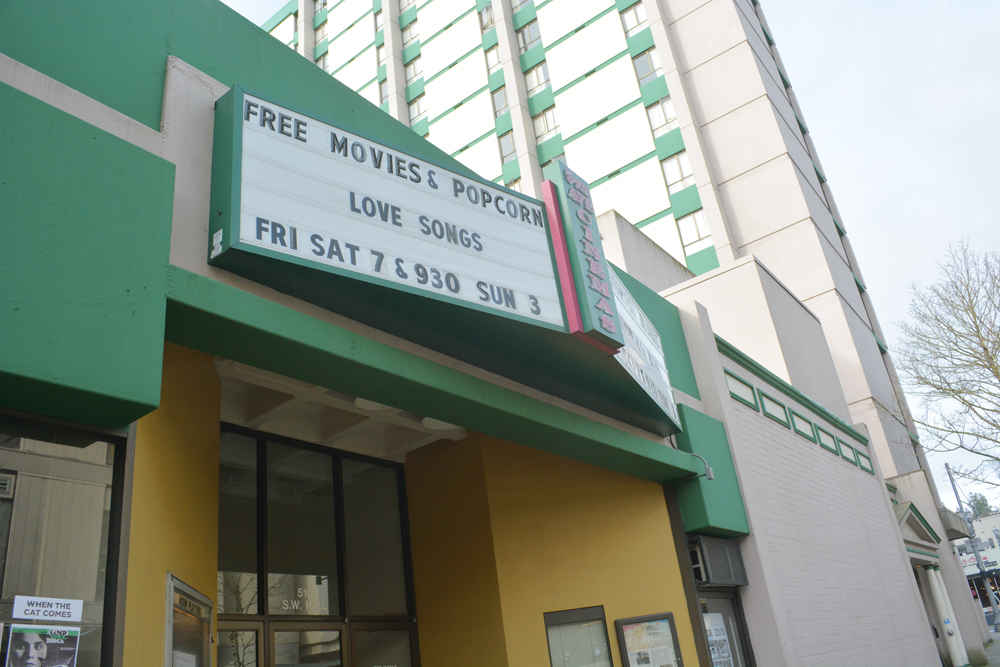Back in the 1940s and ’50s, while we were at war and dealing with its repercussions, Americans were doing their civic duty to reproduce as much as they could, to ensure that the U.S. had a higher population of able-bodied citizens than any other country. The population of the U.S. grew exponentially, but in addition the economy, jobs and education were forever changed.
Senior boom
Back in the 1940s and ’50s, while we were at war and dealing with its repercussions, Americans were doing their civic duty to reproduce as much as they could, to ensure that the U.S. had a higher population of able-bodied citizens than any other country. The population of the U.S. grew exponentially, but in addition the economy, jobs and education were forever changed.
Those baby boomers are still around today. Many of them are our parents or even our grandparents. Now Portland is facing a new kind of boom: a senior boom.
Thanks to Portlandia, Portland has been labeled the city where young people go to retire. While that’s a slight exaggeration, it has validity; but those who deviate from the typical “young people” definition are making their way to Bridgetown as well.
Portland’s already a growing city, with more people flocking to live the PDX lifestyle every day. The Portland/Vancouver area population of people 65 and older is “projected to more than double over the next two decades,” according to The Oregonian in an article in which Alan DeLaTorre, project manager for Portland’s Age-Friendly Cities Project, said that this age demographic will jump from 190,262 to 394,406 over the next 20 years.
The AFCP aims to create quality of life and generate a sense of community for people of all ages. According to the project’s website, this includes combating architecture and transportation that “prevents older people accessing the places they want to visit,” and a call to “dismantle these obstacles and encourage the new ideas that will help make the world a more age-friendly place in the 21st century.”
Basically, the organization wants to combat ageism in every possible way. That’s pretty cool. Even cooler is that Portland is a part of it. Since the population boom will more than likely happen, citywide adjustments must be made to support the changing demographic.
The AFCP’s plans are based on equality. This means that resources and aid will be distributed evenly across the board, combating the idea that all of us young people just want to send those in the 65-plus age range to the urban-legend-esque death panels that conservative-erring folk believe in.
DeLaTorre said the Age-Friendly Advisory Council hopes to have a plan draft available in January and will ask for the city’s approval sometime in 2013.
If approved, many changes will happen throughout the city. Building codes could be modified to make housing more accessible. This would offer accommodation for a broader range of people, including the elderly and people with disabilities, and would help decrease the number of housing properties that aren’t in compliance with the Americans with Disabilities Act. It could also lead to improvements to preexisting properties that aren’t easily accessible.
Another change: sidewalks. Sidewalks are taken for granted more often than not. Even in newer suburban neighborhoods, houses are lined by streets rather than kid-friendly sidewalks. Updating the city’s sidewalks helps all of us, not just the elderly, the disabled or the kids. Sidewalks make getting around the city safer.
Working toward a common goal is Portland State’s Institute on Aging, part of the School of Community Health. The institute’s website states that its goals are to provide “education and insight into our aging population.” It offers resources for the older population, including news and community events, as well as access to many studies conducted by the program and to various publications.
It isn’t easy to accommodate something that’ll happen gradually over the course of 20 years, but it seems like both Portland and PSU are doing what they can to make sure we’re prepared. PSU already hosts more nontraditional students than any other public university in the state, with an average student age of 27. It shows that more and more older folks are heading to college.
The concept isn’t new to PSU, so things on campus probably won’t change too much.
All in all, this coming population growth shows that there’s more to Portland than just soy lattes, vintage stores and Voodoo Doughnut. It might be the place where young people come to retire today, but who knows what it will be like tomorrow.




